Forum Replies Created
- AuthorPosts
-
A quick sketch after drafting in a basic twee-mid baffle to start to package everything. Interestingly I had planned in my head that the twee-mid baffle would live on top of the main baffle surface but in reality the pentas see a baffle step in the other direction (duh). May have to rise the woofers up to match. We will see.
Also contemplating printing my own twee-mid chassis as the original is just so hard to seal. Has very thin geometries at various points and is pretty ugly if left uncovered.
This baffle uses a golden ratio factor but the long axis of the twee-mid module seems to be dominating the baffle shape. Tons of space left over around the woofers. This would be good if I planned on keeping the ports but right now I am planning on ditching them, this is plan of record right now but subject to change once I get into some simulations and measurements.
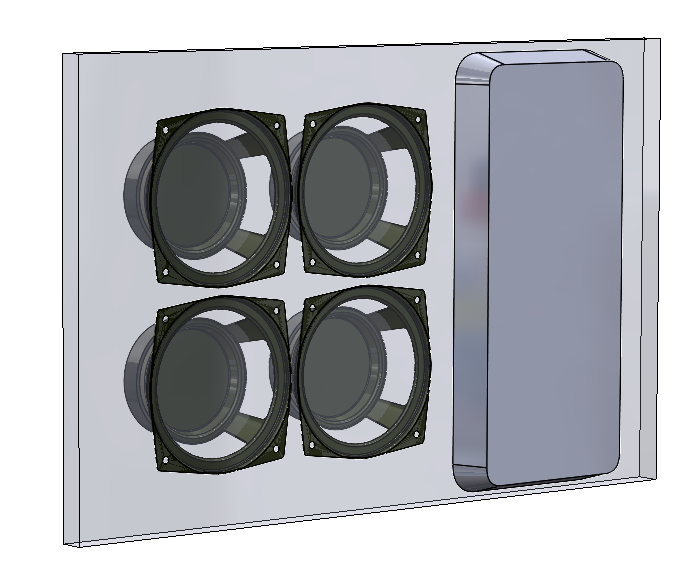
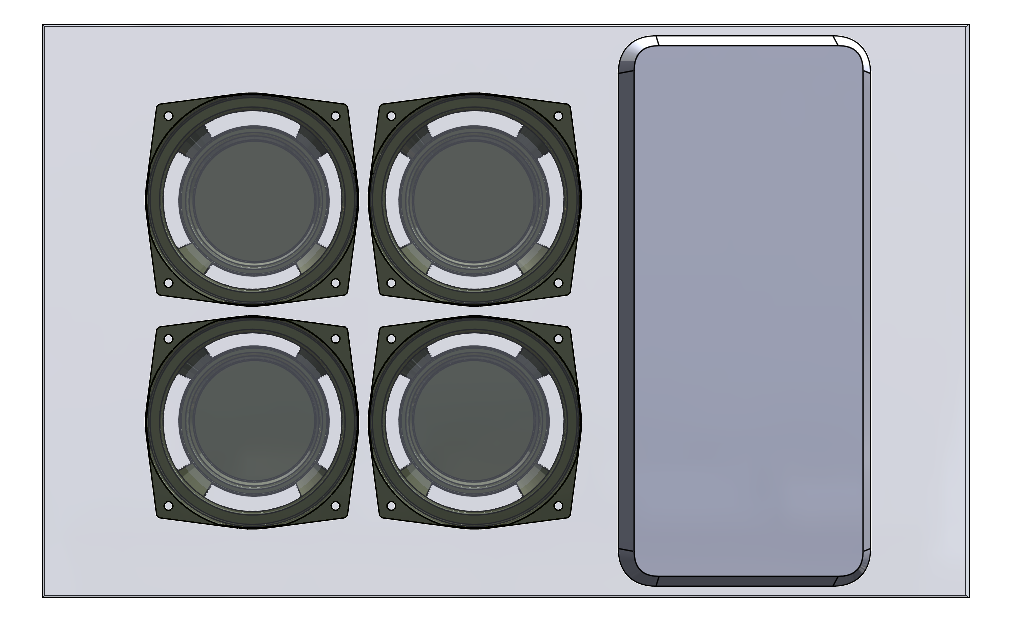
I’m getting into this now! The twee-mid baffle is starting to take shape and I’m definitely going to be printing my own instead of carrying over the original module from the Penta. For many reasons related to design, color (will be printed in color) and geometry in general.
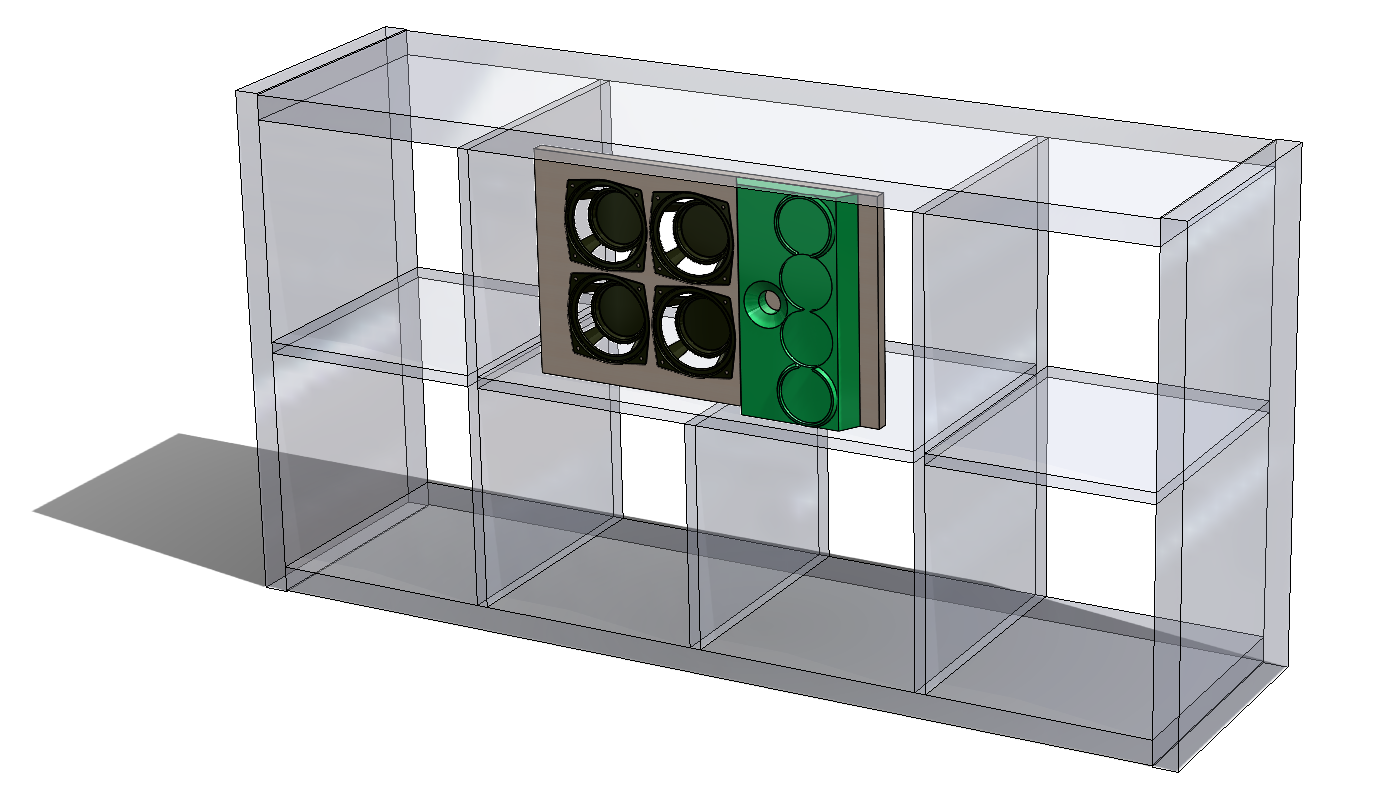
Normally I listen to lots of chillout music when working/doing CAD work but lately when I’m designing audio hardware for fun and not so much work-related, I often listen to some of my most favorite tunes to keep me hyped up and motivated to keep going. Usually my excitement to build crazy / new audio hardware comes from music that I want to be better immersed in or connected to. Here’s some of the stuff driving me these days:



Evan, I use something similar to clamp the surround. Depending on the particular driver, I’ll run some tests with just the clamp. Once I’m happy with the performance, the surround gets some glue. Sometimes, a segmented clamp is needed so that the surround can be glued a section at a time with a thin needle applicator syringe. I’m not too surprised to hear that much of this is being done by hand. I’m guessing that the difference between the higher and lesser quality parts has to do with the “end of line” testing and sorting. Glitch
Indeed. End-of-line testing is paramount. From what I hear, 100% of parts are gauged by this process.
Thanks for the tips! I am considering doing something similar, my colleagues are highly recommending I just go all-in and remove the dust cap and do it properly. Beginning to lean in this direction but I have so many of these things to do!
Finished modeling the woofer (basket and motor) so I can begin to design them into a baffle. Most importantly I tried my best to capture the basket’s very poor brownish-green e-coat finish 😛
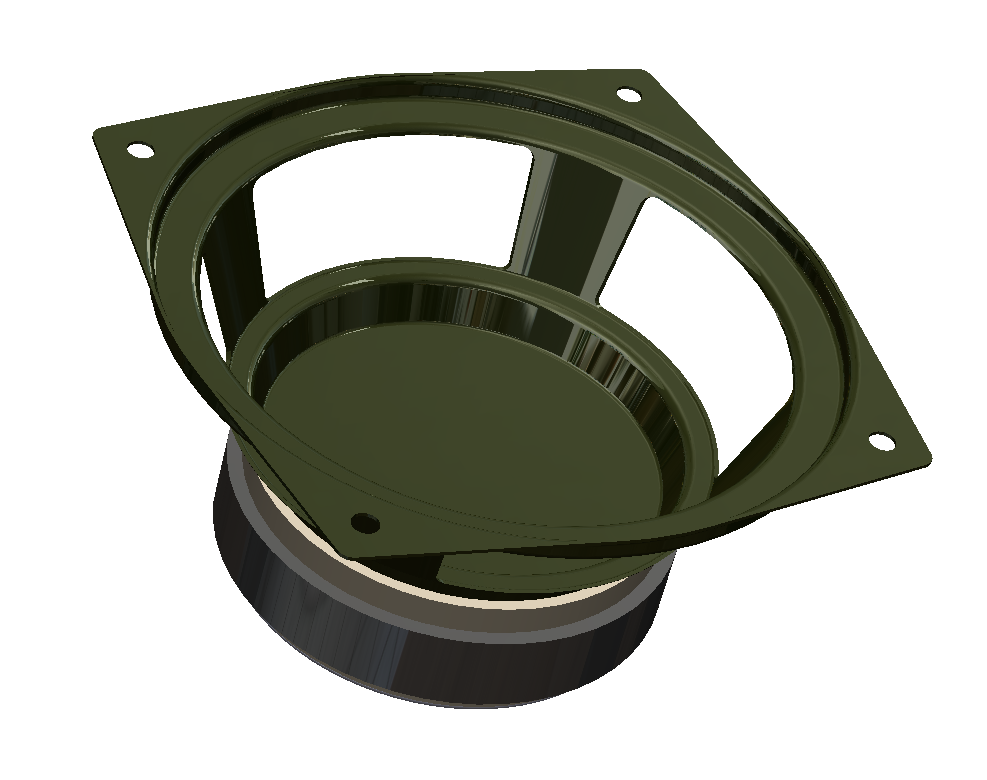
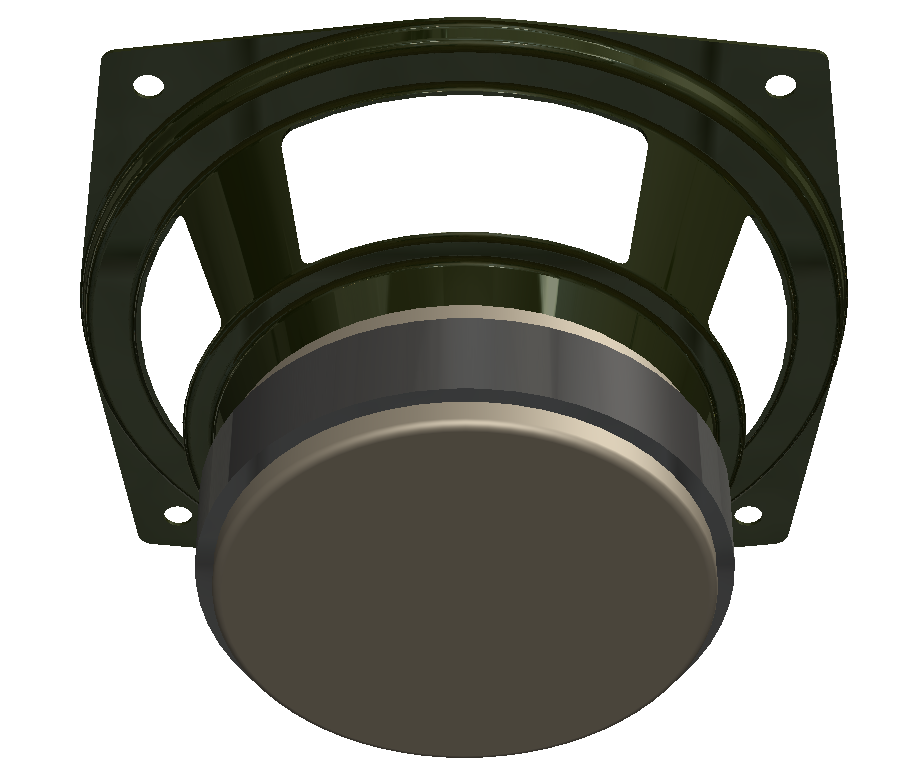
Can you please share the location?
I picked up my first batch of surrounds from the post office yesterday. Getting close to putting these midranges back together.
The last time I did this, I had a hard time finding a way to hold the outer flange down on the basket so I printed some rings to give me the ability to press down consistently around the glue joint.
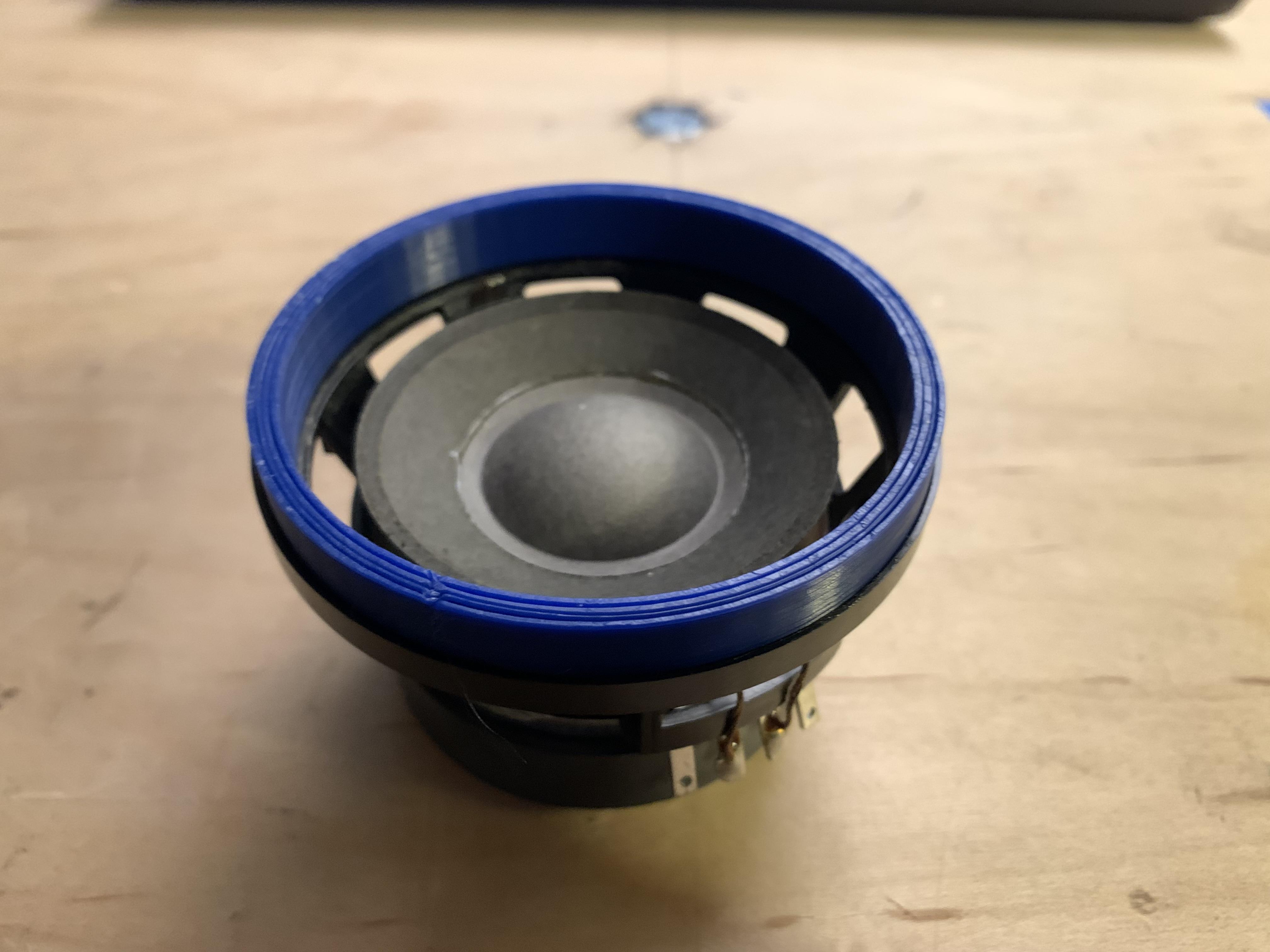
A semi-relevant example for you all: The dust cap isn’t the most critical part of the speaker (acoustically) but you can see here how different drivers can be when they are hand built.
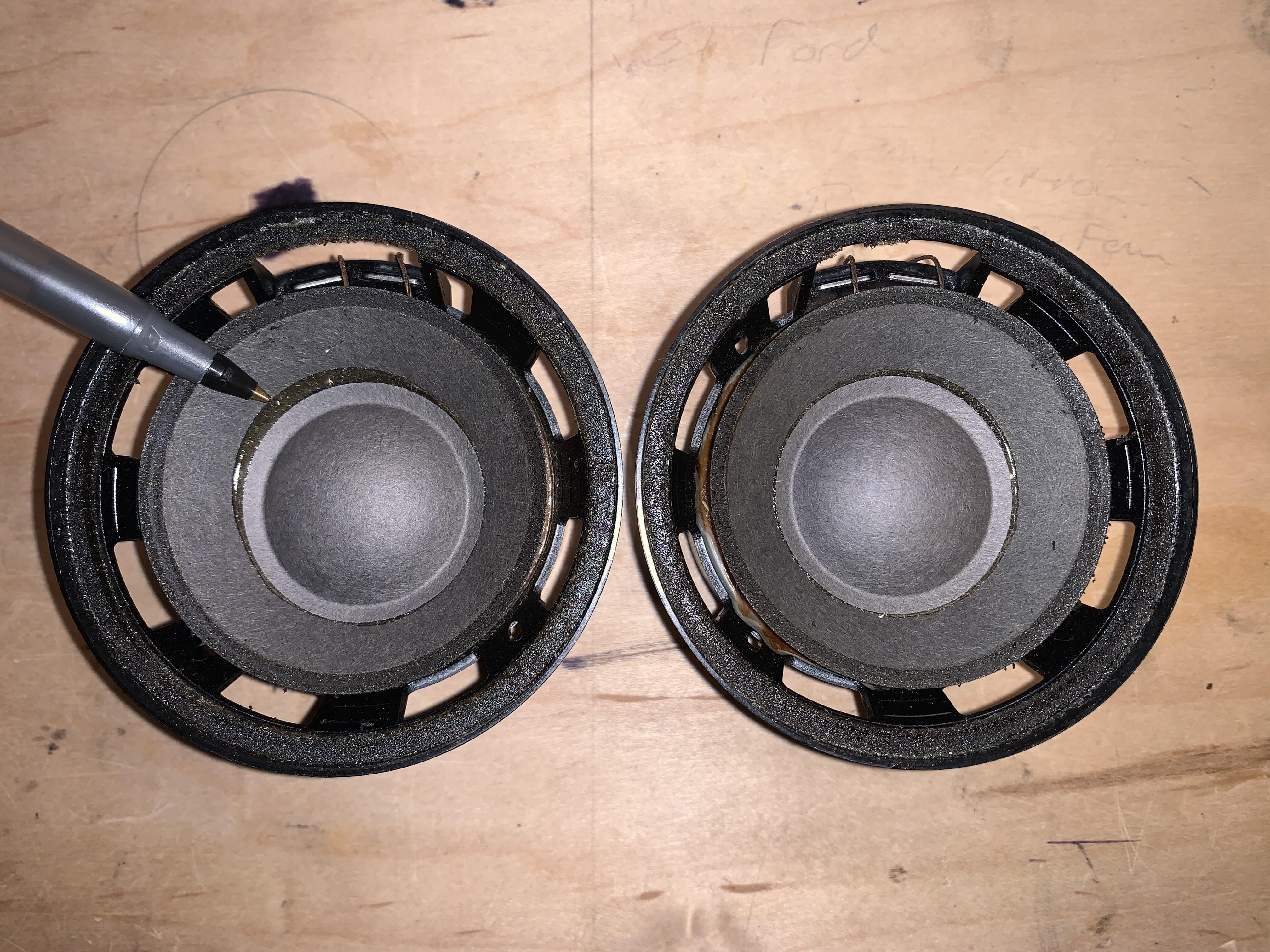
I’ve learned that transducers are inherently very hard to manage (even inside the same batch) consistency-wise in production. There are a lot of discussions about moving away from paper (among many other reasons) for cone materials due to the difficulties of managing consistency – even in the same batch. Transducers are basically still completely hand-made save for the hard parts in the motor+basket. They may be made on an assembly line, but very few lines are automated, even in 2024. Glue dispense is important as it has a major impact on mms of the driver but there still many instances where this is set by the operator on the line. Many of the soft parts and even the voice coil subassembly are hand-picked and assembled. It really takes a lot of skill to build up the skill and then maintain good consistency.
Indeed, refoaming the drivers is not as trivial as some make it seem. At the end of the day the former alignment is controlled by both suspensions and the surround is one of those. The drivers are shimmed with a gap gauge and coil position in the gap.
Thank you very much for the data. This is fantastic.!! Next step, can you do a comparison of the mids with foam and rubber surrounds? And can you meassure the whole speaker? There is a lot of talk in the german section about that the penta can’t do deep bass and they used the trick to overaccentuate some frequency? But is this true?
Of course! Glad to be able to put some useful data out there for BeoWorld.
Yes of course, I can definitely compare a foam and rubber surround midrange. I don’t have a midrange unit with a rubber surround so I will need someone to supply it.
I don’t have an anechoic chamber here but we can try to get some full system acoustic responses at the end of the project. This will be important to compare the Centa Penta to the original, though, so I will do my best.
Regarding deep bass (20Hz – 40Hz) I think this is simply a matter surrounding the bass reflex port tuning/physics. A ported (or speaker with passive radiators) is very limiting below the tuning frequency. The f3 / LF roll-off is usually much flatter and more natural with a sealed enclosure. Perhaps the guys in the German forum should plug the ports and try adding some boost with a DSP. This woofer should work nearly as well in a sealed box. I am not sure what the system tuning is on the Penta exactly but the spec sheet here on Beoworld says 40Hz which is pretty normal for a speaker this size. I’ll have a more precise answer for you in a few days.
Cool. I appreciate seeing data even if I don’t understand exactly what it is saying. ? Is the testing a driver easy enough where it is possible to test multiple drivers? I’d be curious about the driver uniformity, especially the refoamed mid-ranges. With some measure of “sameness” you could either pick the best of the batch for your project or sort for best matched pairs. Glitch
I’m still learning my way around the hardcore transducer science myself, honestly. Important things here though are things like suspension and BL symmetry. It is not uncommon to see asymmetries like this driver, it is pretty normal. Indeed, we could test a few more to see if the asymmetry was intentional or not.
What these tests do not offer are acoustic responses. To test the spectral capability we would need to measure on a baffle with microphones etc. To really understand uniformity, we would need to both Klippel and mic several samples to understand the consistency.
Yeah, the Klippel LSI & LPM tests only take about 15 min to run. Easy to put a few speakers through.
I definitely plan on putting at least one of my re-foamed midranges through the Klippel test to see what the parameters are like. If I get the opportunity to test the acoustic response I will do so. If someone wants to lend me a mid with a rubber surround for testing, I will make it happen.
I think B&O used speakers that were designed for the use of being a car hifi speaker. The idea is simple, if we do have a speaker with a limited space, an ordinary speaker wouldn’t perform in an apropiate way. That’s why they used speakers, that were intended as car speakers. Haas was the manufacture of these speakers and they were known for car Hifi systems. Later Haas was a part of IT&T. IT&T was bought by Nokia in the late ninetees.
Well I did do some googling on Haes (the midranges from this pair of Pentas are from Haes) which was definitely serving the German car industry for some time.
I have never heard of Haes until now. It’s interesting how transducer companies have consolidated or otherwise changed over the years.
I work in automotive audio (at a large loudspeaker and electronics tier-1/ODM/JDM) myself and we borrow inspiration from Pro + Consumer transducer technology because they offer compelling form factors. Hard to imagine it was the other way around at one point!
Klippel on the woofer now finished and the results are in!
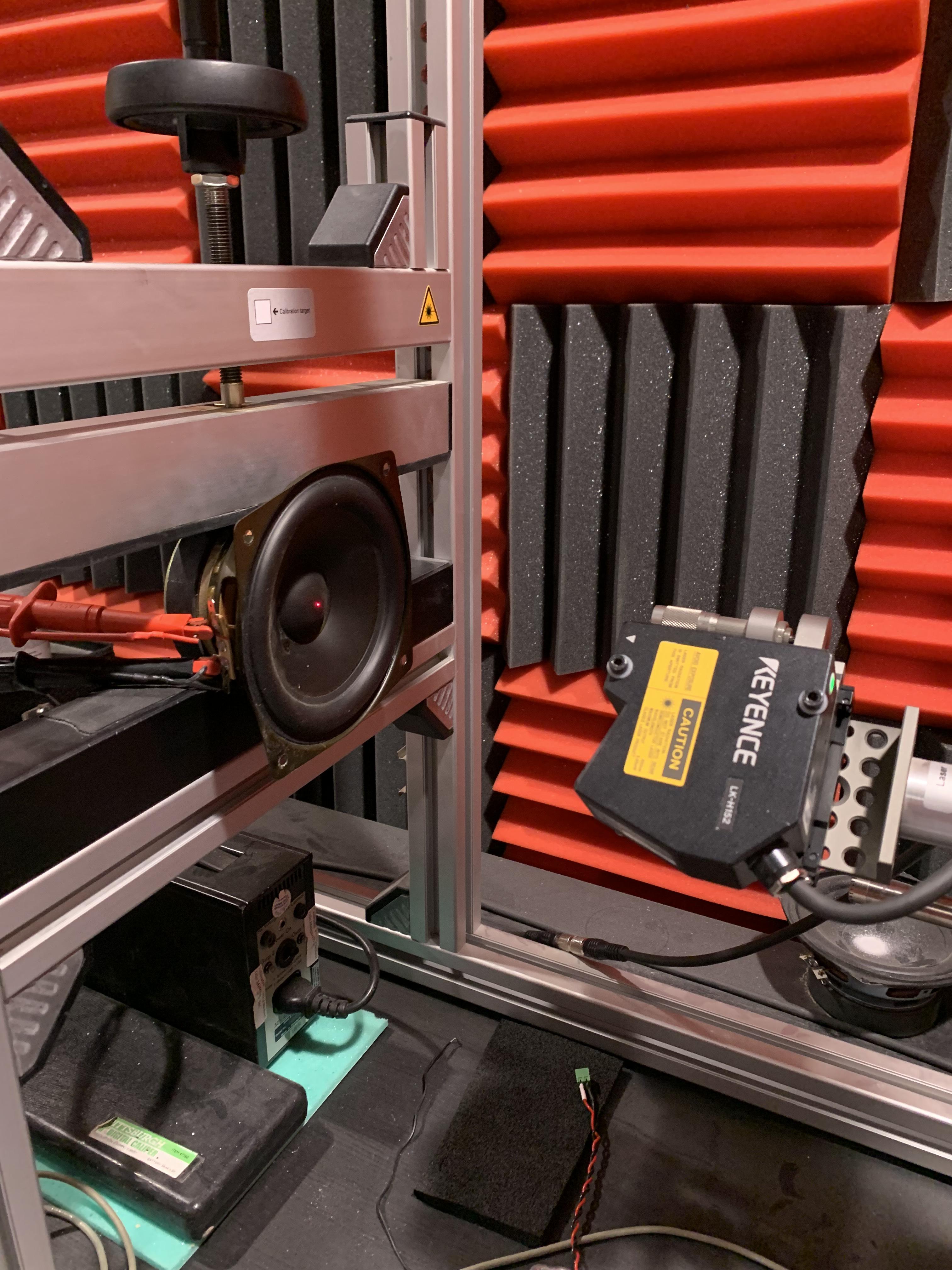
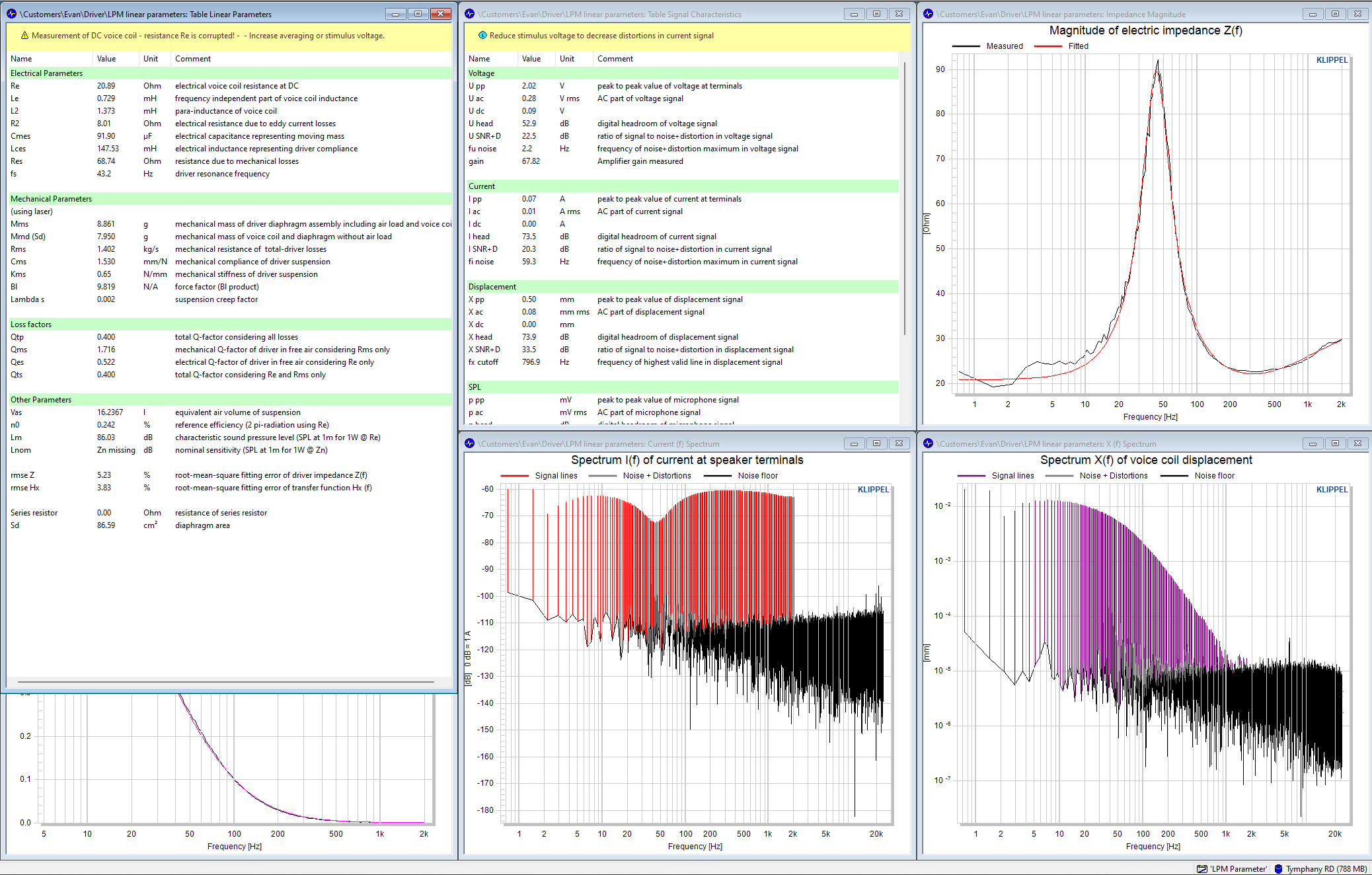
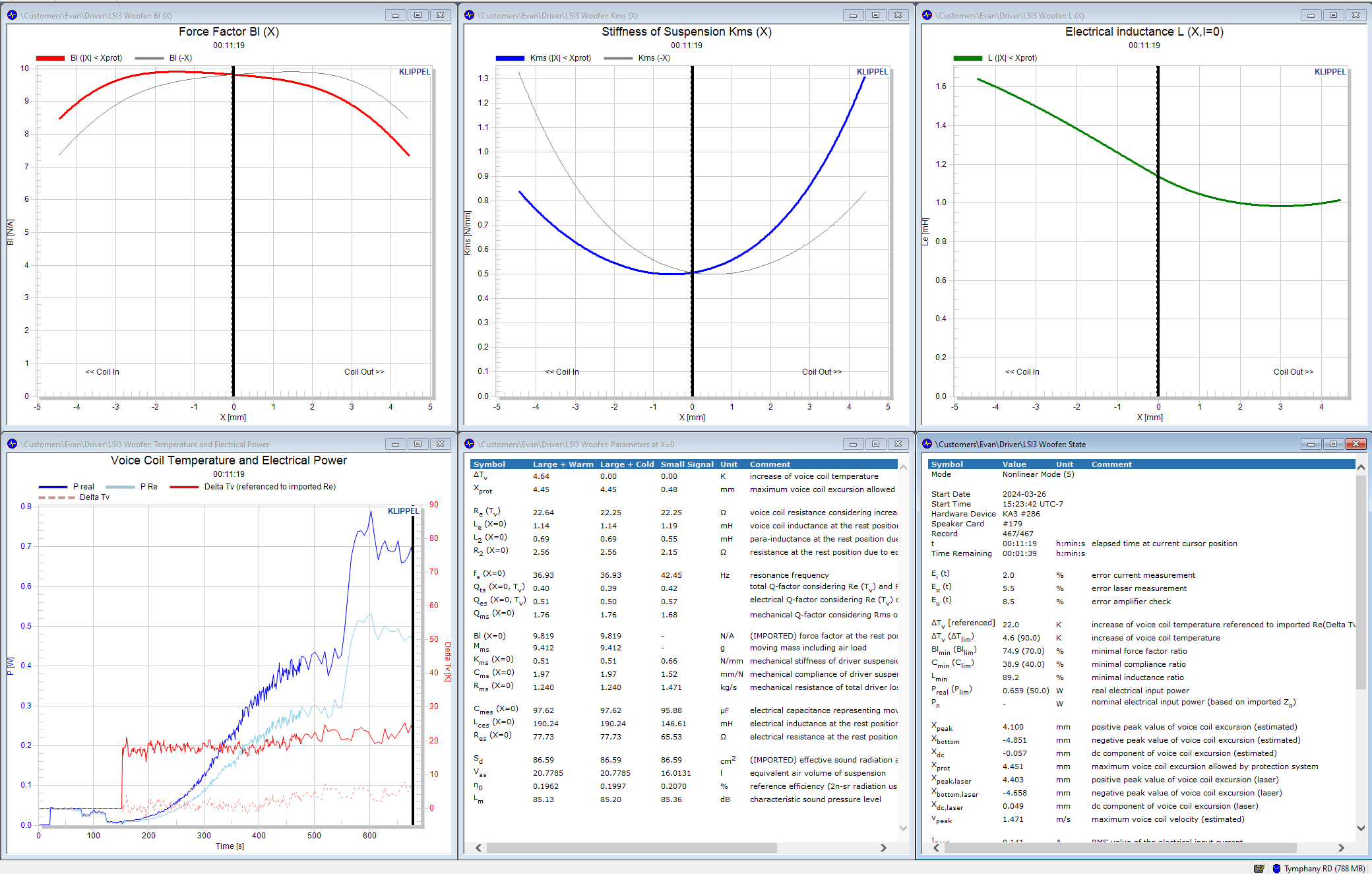
Not bad 38(?) years on. xMax of roughly 4.5 mm and a very versatile Qts (0.4). Also very compliant. Some interesting conversations were sparked in the office as a result and I’m considering some small deviations from the original Penta design in order to slightly better position the Centa Penta for its new role in center channel work.
Managed to get another chunk of progress out of the way for this project: I just scored some donor BeoVox Pentas locally off CL. These things have been through some traumatic previous ownership at some point but should be able to give me what I need to build at least one good Centa. Going to have to get parts ordered for it so I can get it up to snuff for a few specific measurements I need to make.
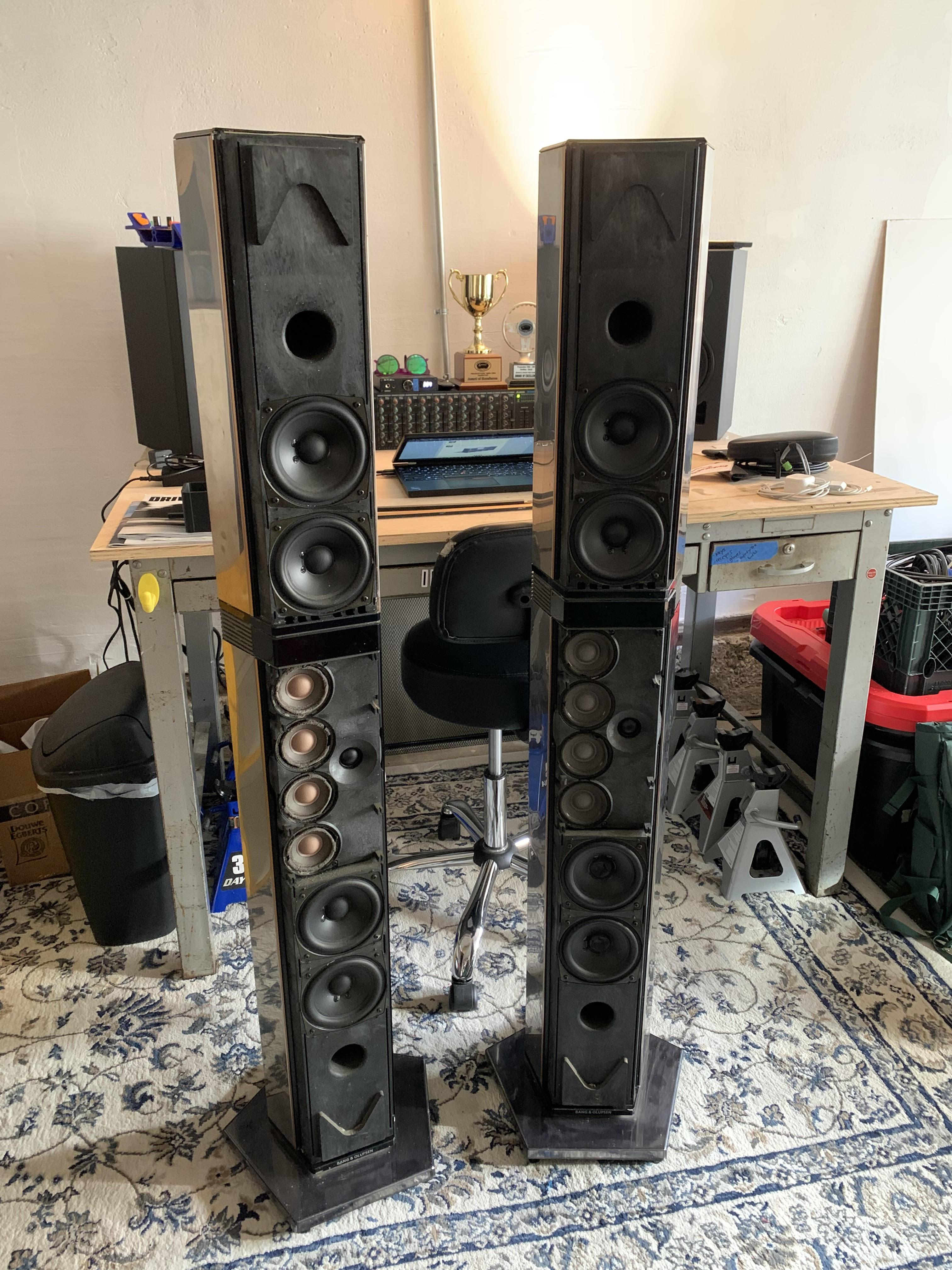
They are perfect for this project honestly, I should be able to use these for reverse engineering for most of the journey and can reference the other Pentas in my collection if necessary.
What a difference the amp makes by the way. So much shorter and lighter!
This is news to me. Some Beo4s can do this and some cant?
I performed the region change on a DVD2 a few years ago with the Beo4 that I was just using at the time on a daily basis. I suppose the good news here is that I still have this Beo4 (I think!).
Do the instructions above for the 7-32/7-40 also work on 7-55 mk1? I will have to perform the region change myself soon.
Centa Penta, surely!Hahaha genius! Centa Penta it is!Anyone happen to know the manufacturer of the Penta woofer? It’s marked J82TNI and B&O part number 8480197. Very few hits from a quick google search.
Interesting to note – the basket is not vented below the spider. Bit of a odd feature for a home / hi-fi speaker.
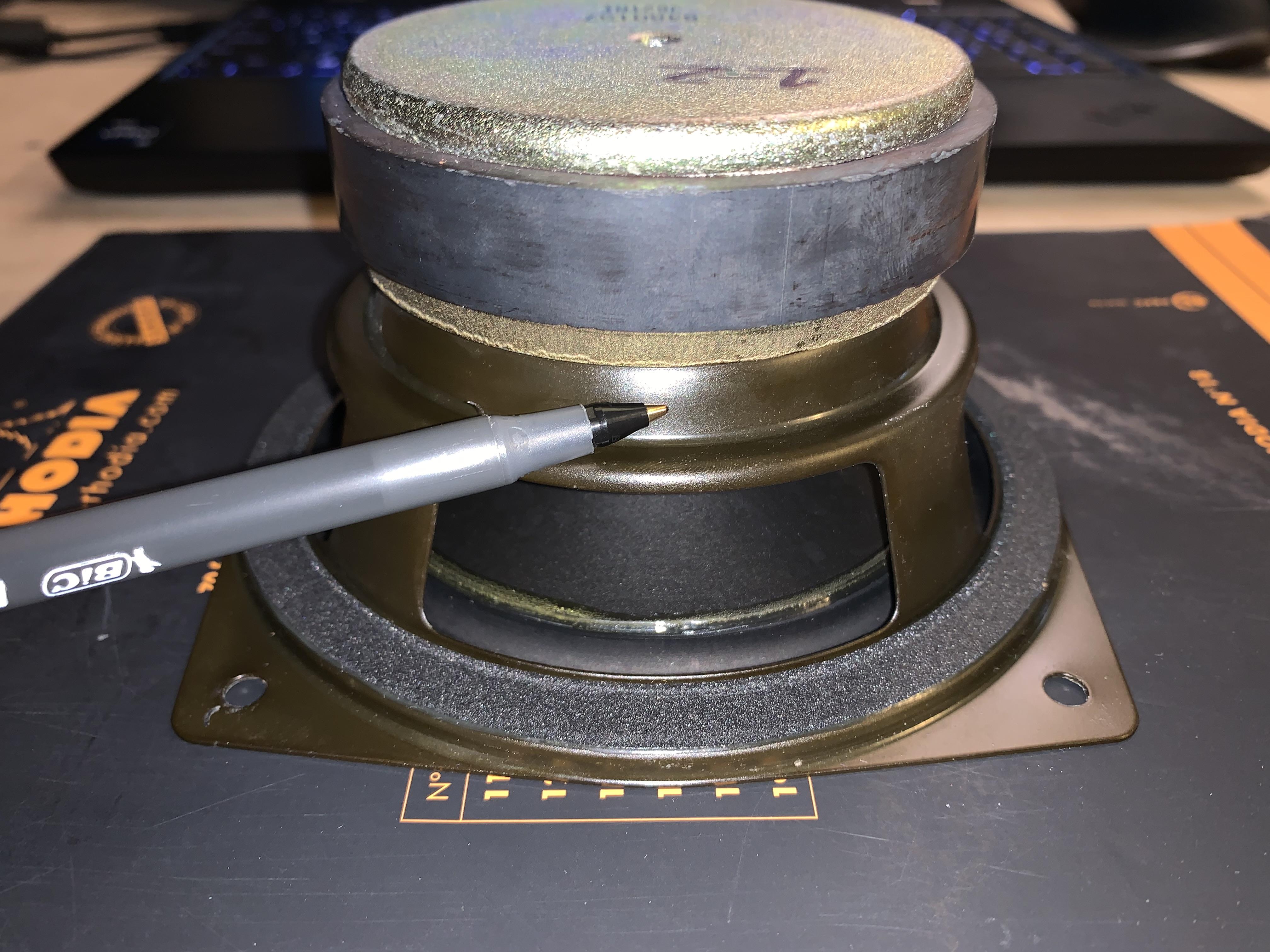
I really hope you guys like engineering details. I’m going to put one of the woofers and one of the mids (once refoamed) through the Klippel measurement at work and report back. It will be interesting to see how these drivers measure and how they compare to modern transducers.
Some interesting notes from the donor pair:
Type 6611 / serials 06574475 & 06574459
The midrange transducers had no gaskets to the baffle whatsoever and many screw heads already loose. Maybe someone was already in these speakers before?
Most interestingly, these seem to have been originally sold in China as there is some sort of import sticker underneath. One was scribbled out but the other was intact enough to run through google translate:
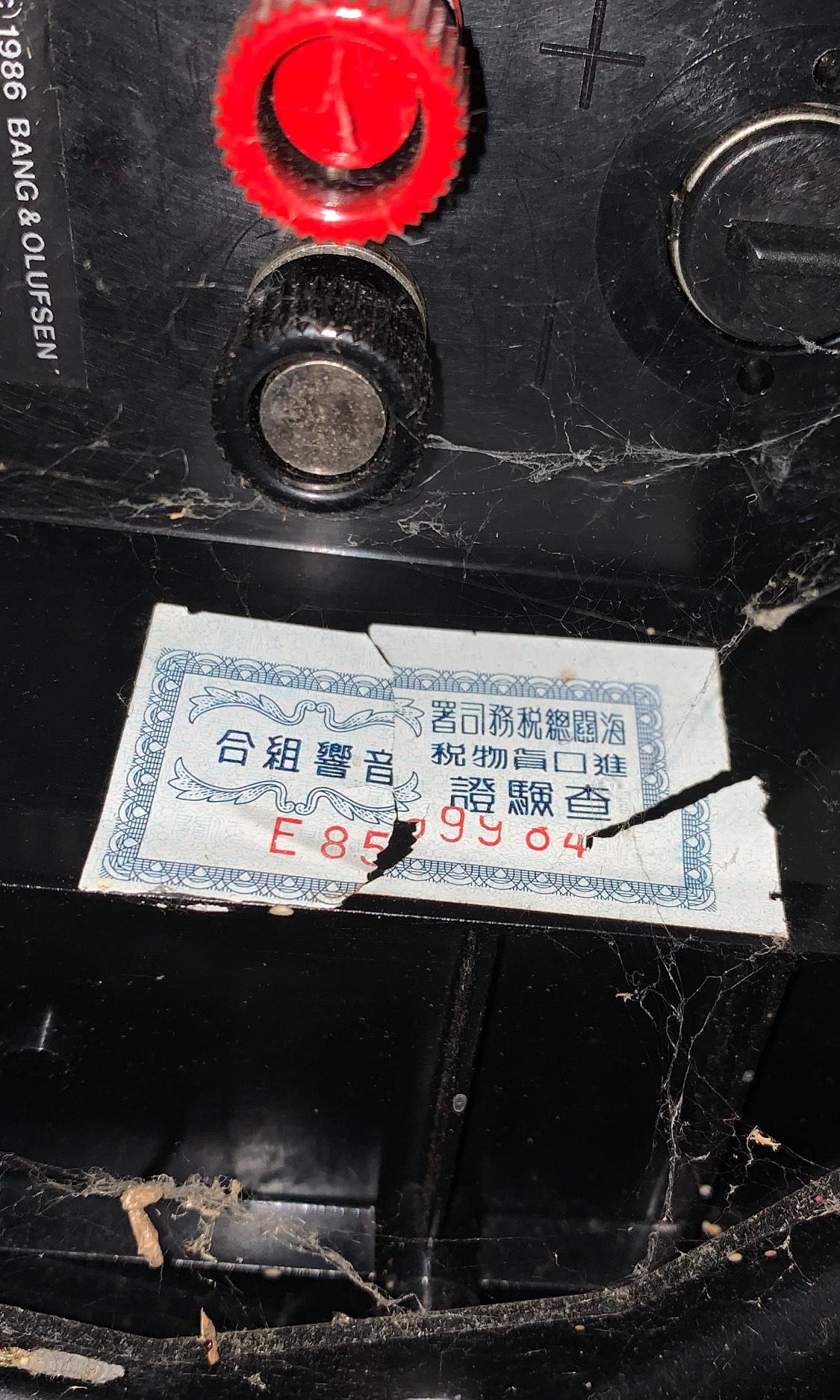
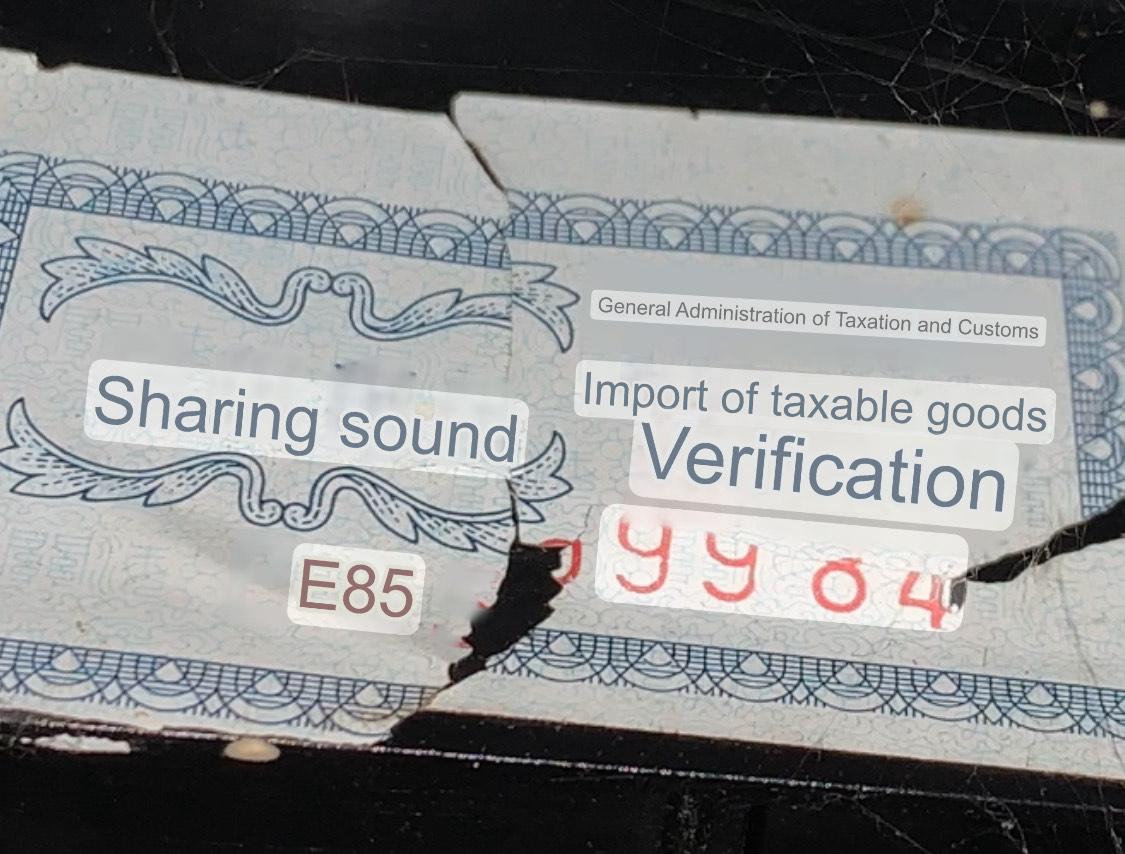
Fascinating that these speakers built in Denmark made their way to China and then to California. Explains their condition for sure!
Ok I guess the first step (in the modeling domain) is to get the Kallax into Solidworks. I’ll build the Penta-C(?) / Center Penta(?) What should we name this thing?? …into the Kallax for reference along the way.
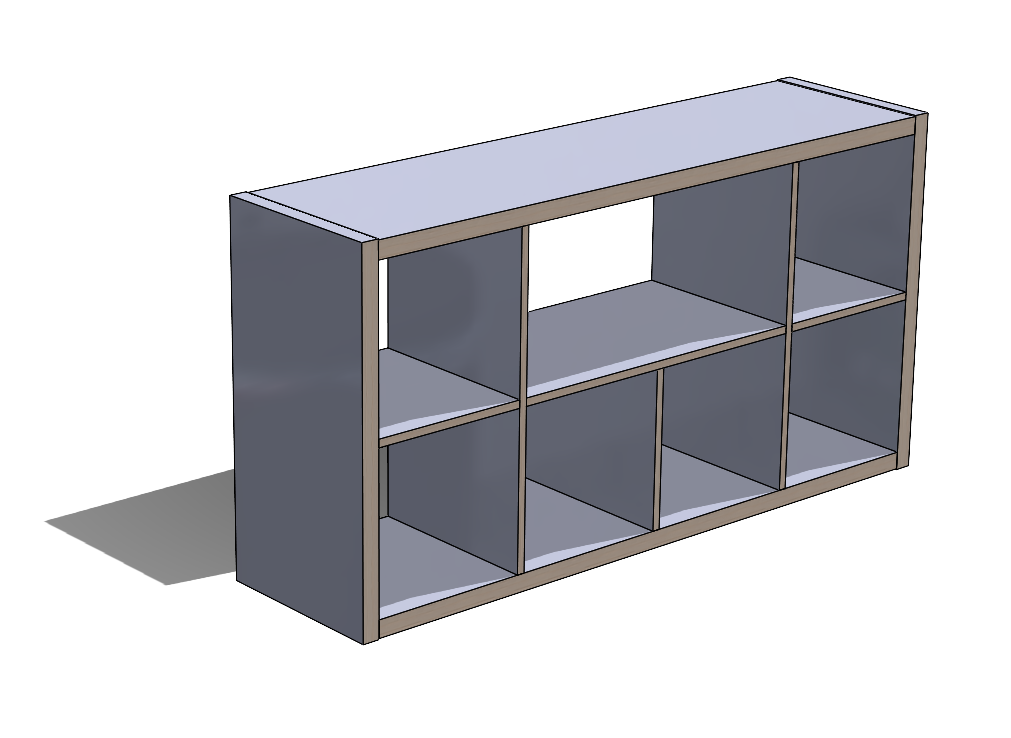 That already looks great!
That already looks great!Thanks! Ok that’s one vote in for the wooden box route.
- AuthorPosts
